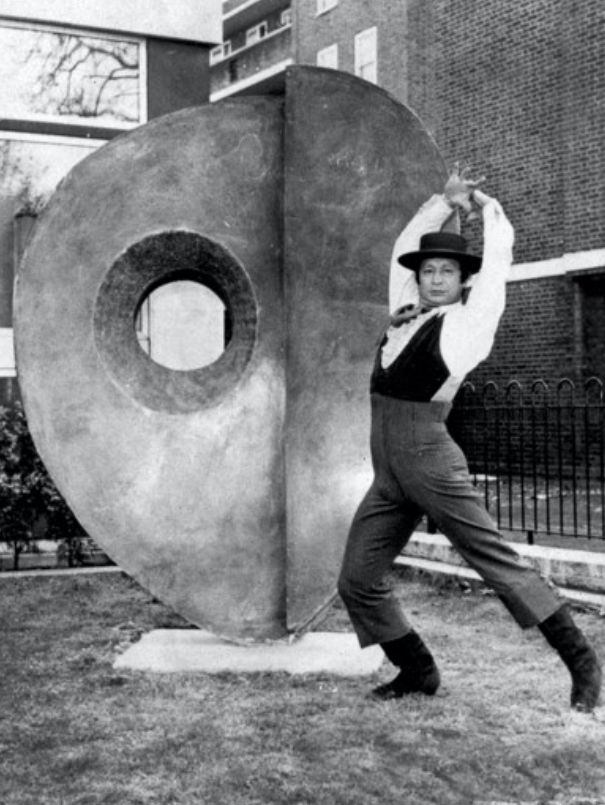
Ron Hitchins (1926-2019) was a British born artist, sculptor, and flamenco dancer whose life and soul was rooted in Hackney, East London from age 13. He was born to a Lithuanian prostitute working in a Soho opium den, and a Chinese father. Although largely self-taught, he studied as a toolmaker and engineer before WWII, and took further education courses in various art techniques at Isleworth Polytechnic (now Thames College), and at the Sir John Cass School of Art, Architecture & Design in the late 1950s & 60s.
Fashion & Flamenco
From the late 1940s, after National Service working in a coal mine, and then working as a fishmonger, he embellished, designed and made fashionable mens shirts and suits, which he sold himself on East End market stalls. That and his snappy dress sense earned him the nicknames ‘Flash’ and ‘El Chino’. This name suited him as, after World War Two, he earned a large part of his living from his innate talent for dance – initially Jive and Cha Cha Cha, but most notably flamenco after he saw the legendary Antonio (Ruiz Soler) perform in 1951. From 1961 into the 1990s, his commissions to teach and dance at events and parties introduced him to a wide range of people, including artists, aristocrats, and socialites. In 1975, he even appeared as a flamenco dancer in an episode of ‘The Sweeney’. He continued to dance flamenco into the 2000s, when he was well into his 80s.
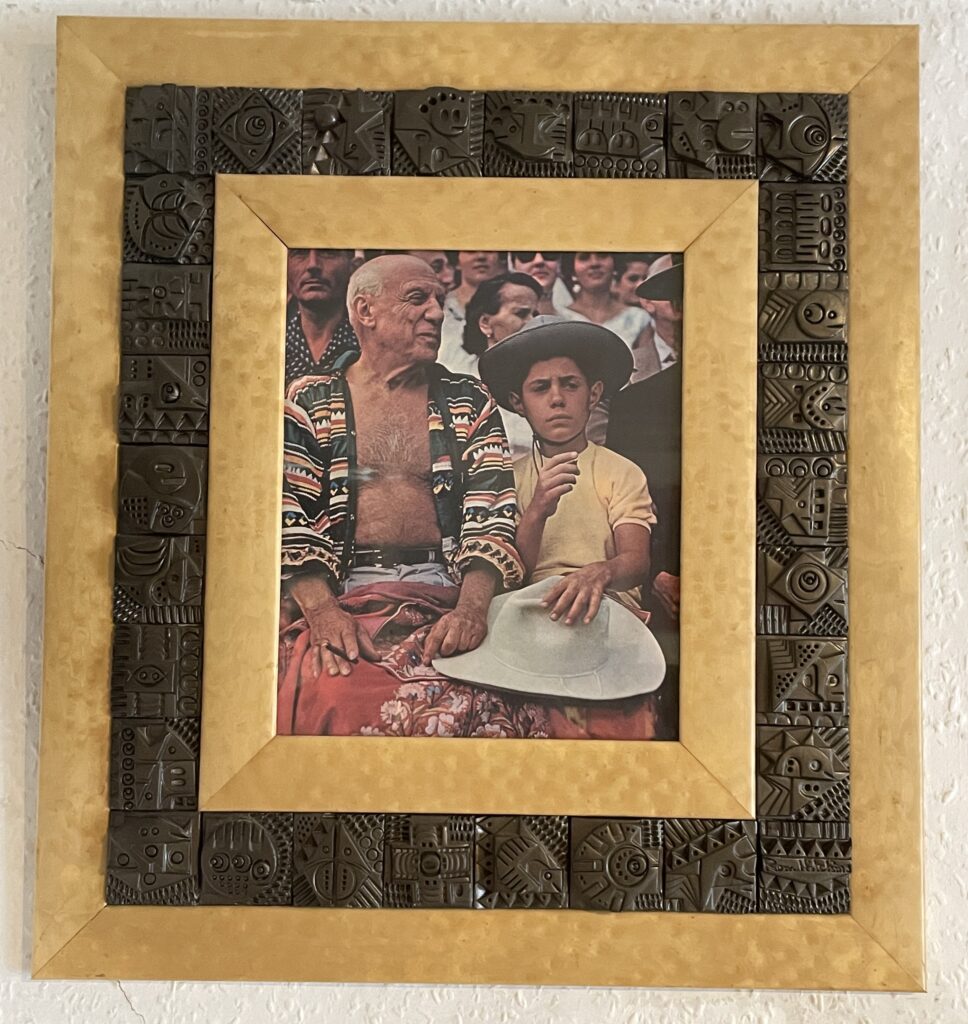
The Genesis of Art
During the early 1950s, inspired partly by the perceived lifestyle of an artist that he aspired to and partly by a need to create with his hands and the ability to do so, he began to sculpt and make art. His house at 43 Malvern Road, Hackney (bought in 1955) included at least one room as a studio, and one room for teaching and practising dance. He was inspired by the work of Picasso, Brancusi, Ernst and Hepworth, the naive art that in turn inspired them, and modern architecture. He also enjoyed the art of Tamara de Lempicka, judging by the framed poster reproductions he owned, and Cubism may have also been an inspiration. Various rooms in his house contained piles of copies of magazines such as ‘Domus’ and ‘Art and Artists’. In June 1964, he was given his first exhibition, at the John Whibley Gallery in Marylebone, but most of his work was sold from the 1950s-2000s on an ad hoc basis at infrequent gallery exhibitions (mainly Whibley) during the late 1960s & 70s, via market stalls, and privately to locals, friends, and those who displayed a genuine interest in it. Sometimes, if someone was particularly ardent and impecunious, he would give it away. He was suspicious of gallerists and was never ‘represented’ in the traditional art world sense of the word. As such, no comprehensive period exhibition catalogue of his work is known to exist, although his work was apparently covered in art journals of the time and he exhibited at the Royal Academy in 1967.
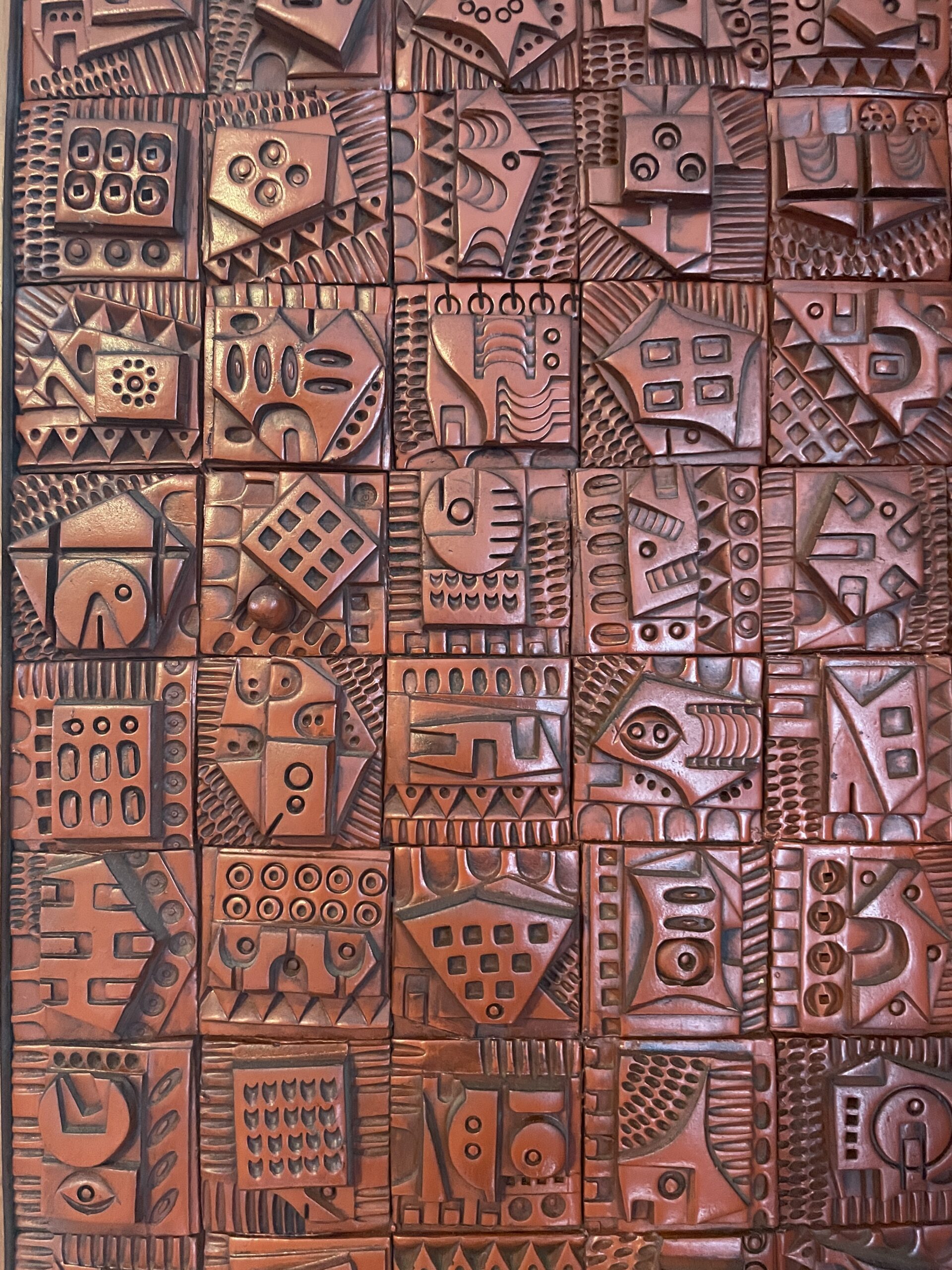
Thousands of Tiles
Hitchins was a highly prolific artist with a vast output, and he worked with ceramic, plaster, metals, Perspex, fibreglass, wood, paint, ink, Biro, and felt-tip pen across his active period of some sixty years. But it is for his idiosyncratic and instantly recognisable small clay (terracotta) tiles that he is celebrated today. These apparently came about after the Canadian sculptor Maryon Kantaroff (1933-2019) asked him to sit for her in the mid-1960s. He was fascinated by the way she both used clay and created moulds for her sculptures. Using left-over clay, he developed unglazed clay pendants and necklaces inspired by Mexican designs, and these were the genesis of his 5cm (2in) square tiles that he is now best known for.
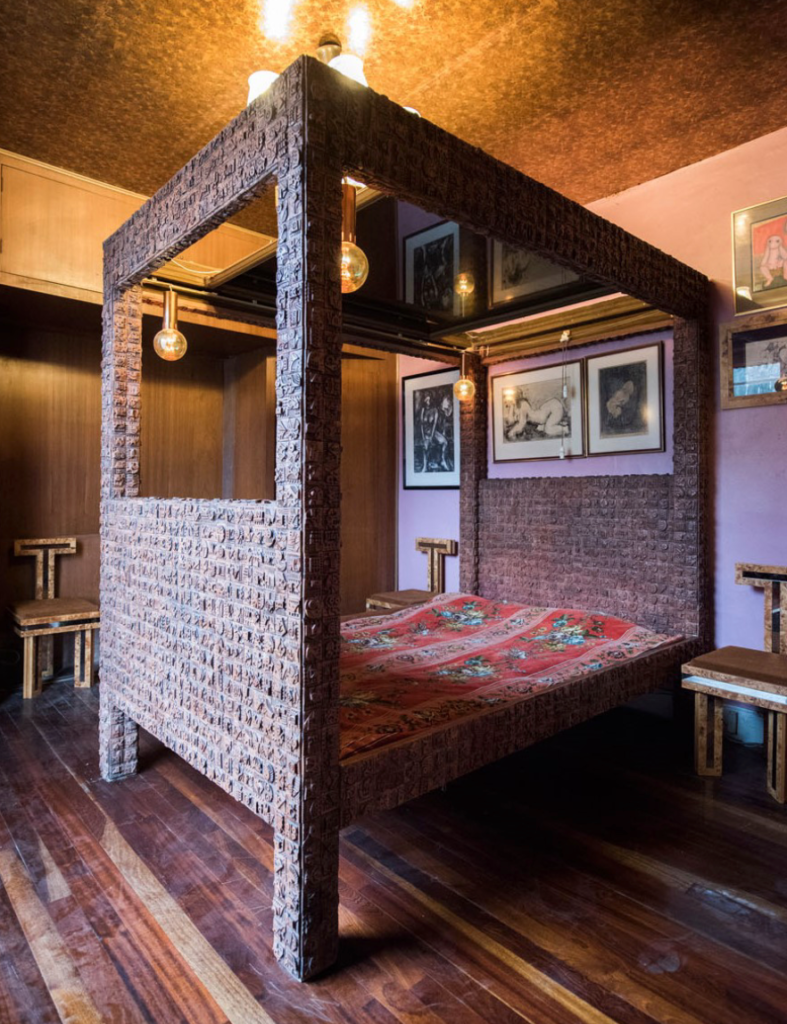
Carved and impressed by hand with low relief geometric designs from a shallow block of terracotta clay and baked in a kiln in his basement, he produced tens of thousands from the mid-1960s until the 2000s. His tools were simple, comprising knives, paperclips and even a Biro tube, and he often worked naked due to the heat from the kiln, earning himself the nickname ‘The Naked Sculptor’. Although many motifs were repeated, each tile – astonishingly – is unique in precise design and composition. Many were combined to decorate the surfaces of mirror frames (which are comparatively common), picture frames and furniture – including his huge four poster bed. They were also carefully assembled and mounted onto wood to create panels of varying sizes, many of which decorated walls and surfaces of the interior of his Hackney home. Such assemblages were typically stained (such as with boot polish), or sprayed with car paint, to give them colour. Colours range from gold and silver to copper and bronze, dark red, and black. Smaller panels were framed using shop-bought frames and mouldings typical of the period.
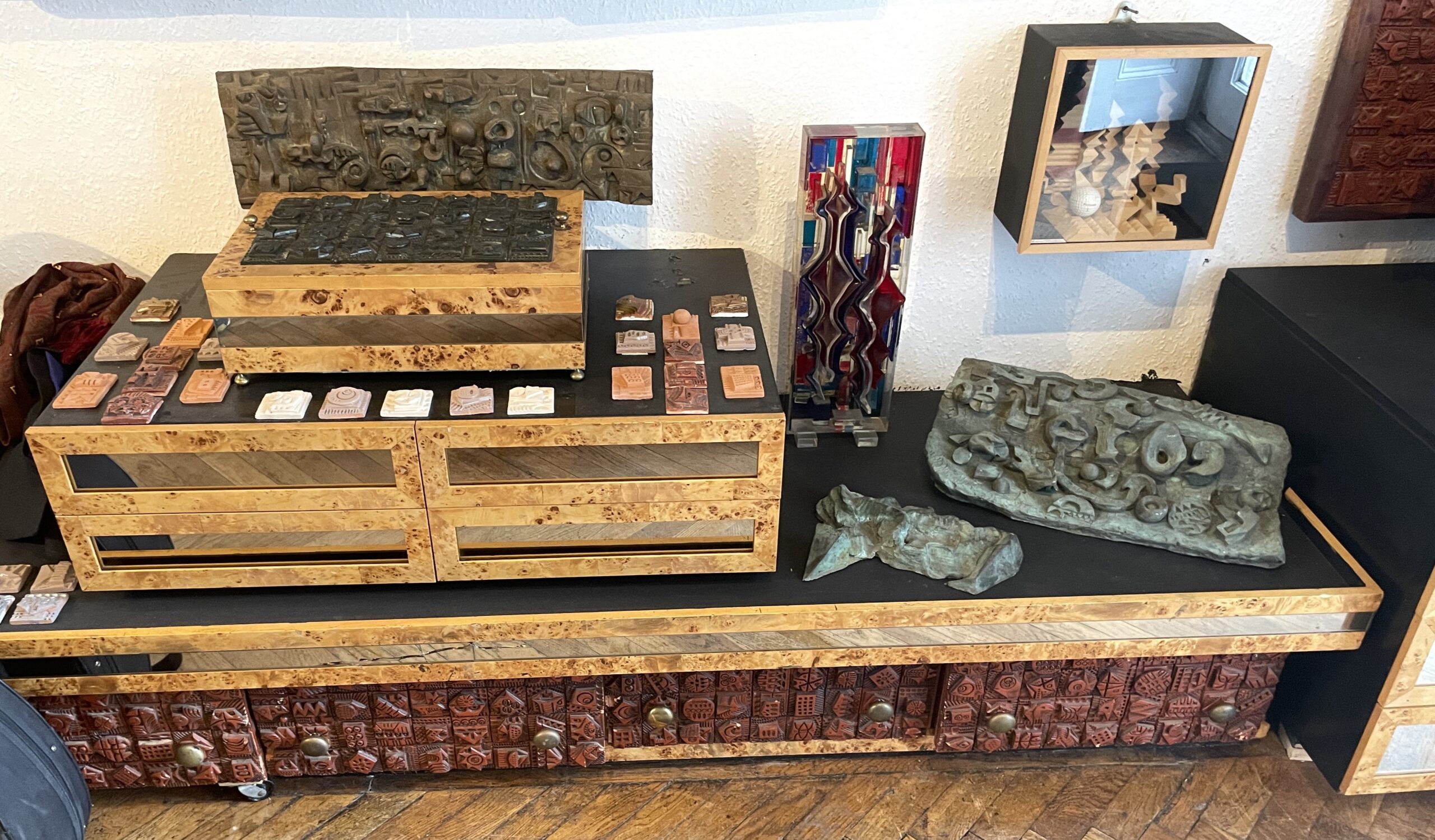
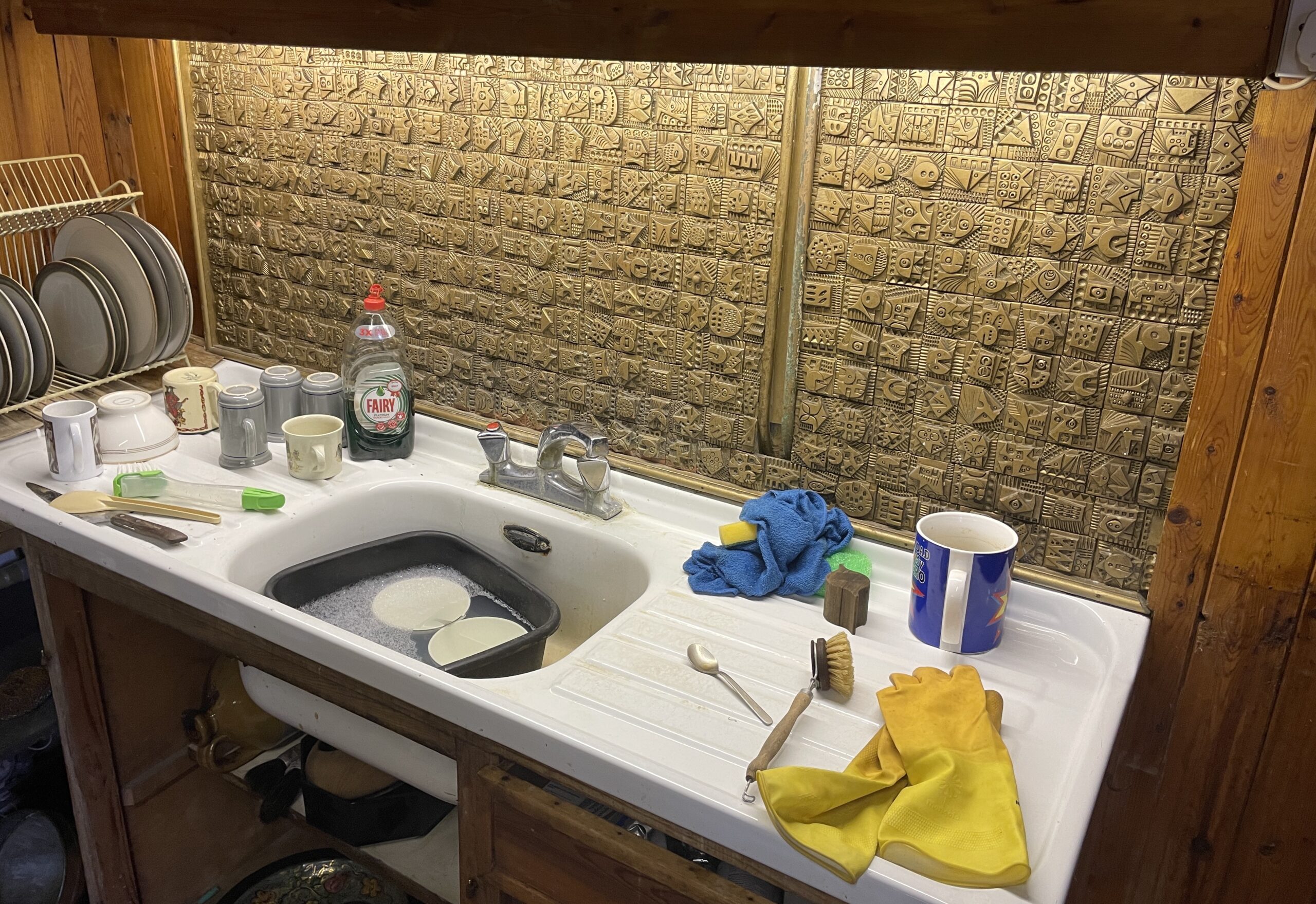
We will never know why he chose tiles of this size, or exactly what the inspiration behind them was, let alone what drove him to produce such a truly vast quantity. His art and motivations were clearly truly personal. There appears to be no precedent, except a fusion of Art Deco architectural panels, Brutalist architecture (then, new), or the geometrically embellished surfaces of Pre-Columbian (Aztec) or ancient Southeast Asian buildings which he would have only seen in books and magazines. Perhaps making them was a catharsis, or a constant internal compulsion to create consistently that was linked, maybe, to the constant beat of flamenco dance music.
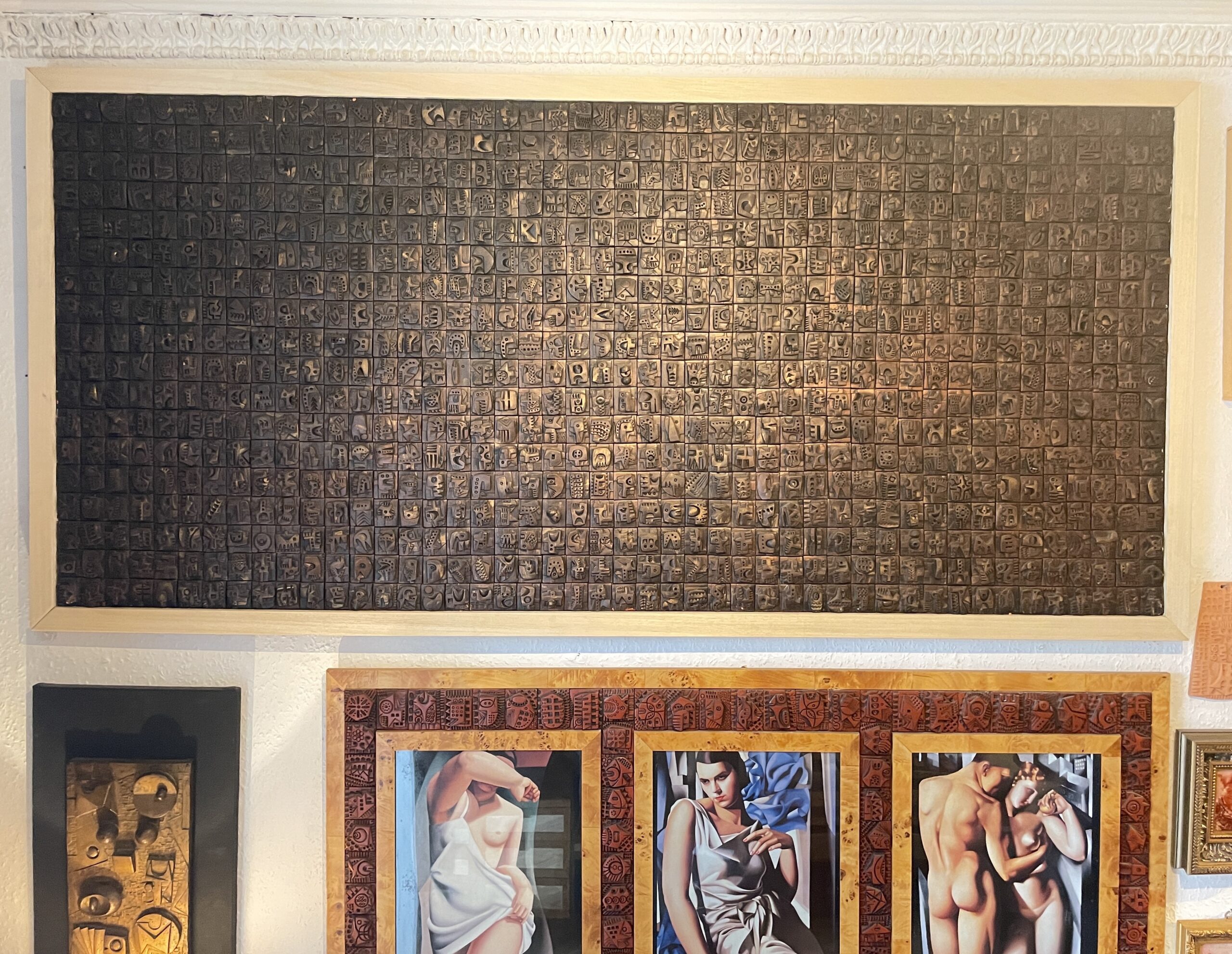
Prolific Panels
He expanded the theme by producing other forms, many larger in size, such as rectangular, pentagonal, oval, circular, teardrop-shaped or crescent terracotta wall pendants, and by using fibreglass to create even larger panels of varying sizes and shapes with the same type of geometric motifs. These vary from unique pieces (even entire doors), to serially produced pieces such as numbers and larger wall panels. Some were used to decorate the exterior of his home, and many were painted, sometimes to give the effect of being made from metal, often with a verdigris coloured finish. The designs are equally successful, regardless of size or material.
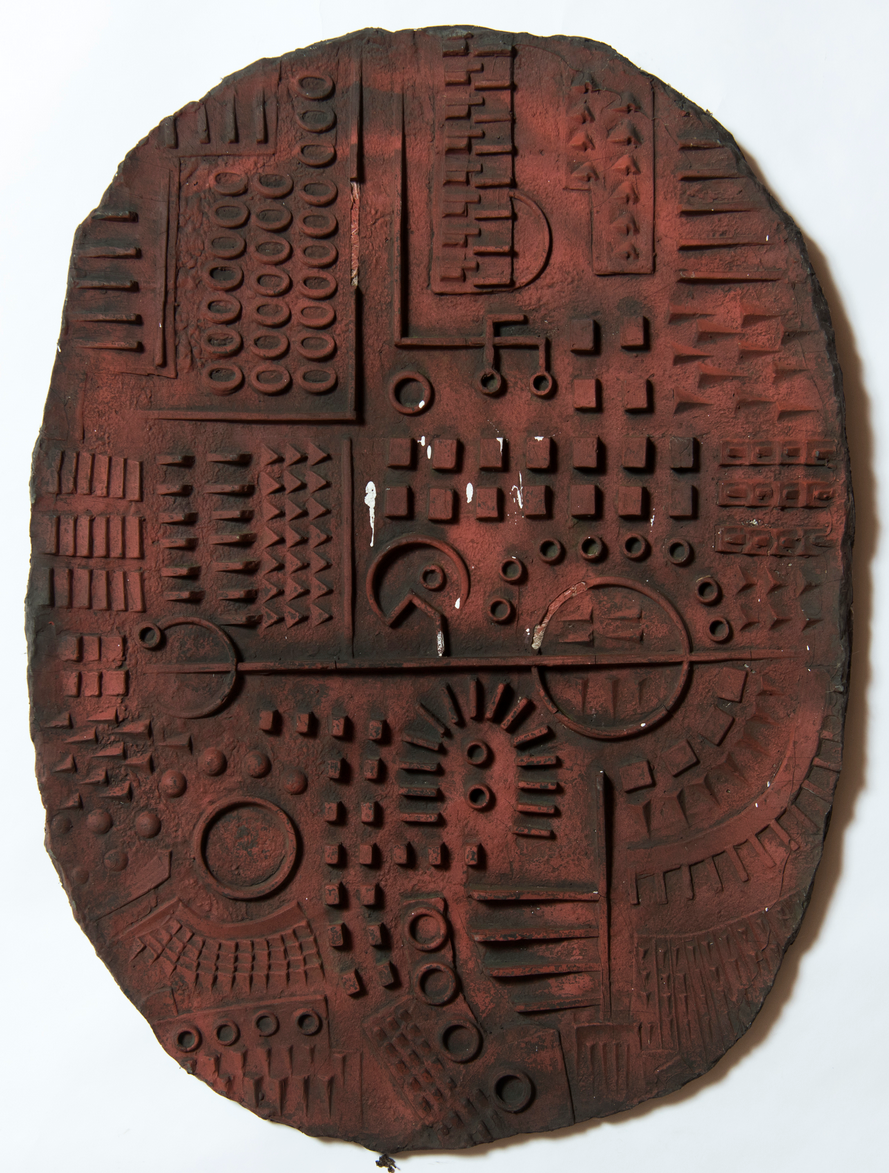
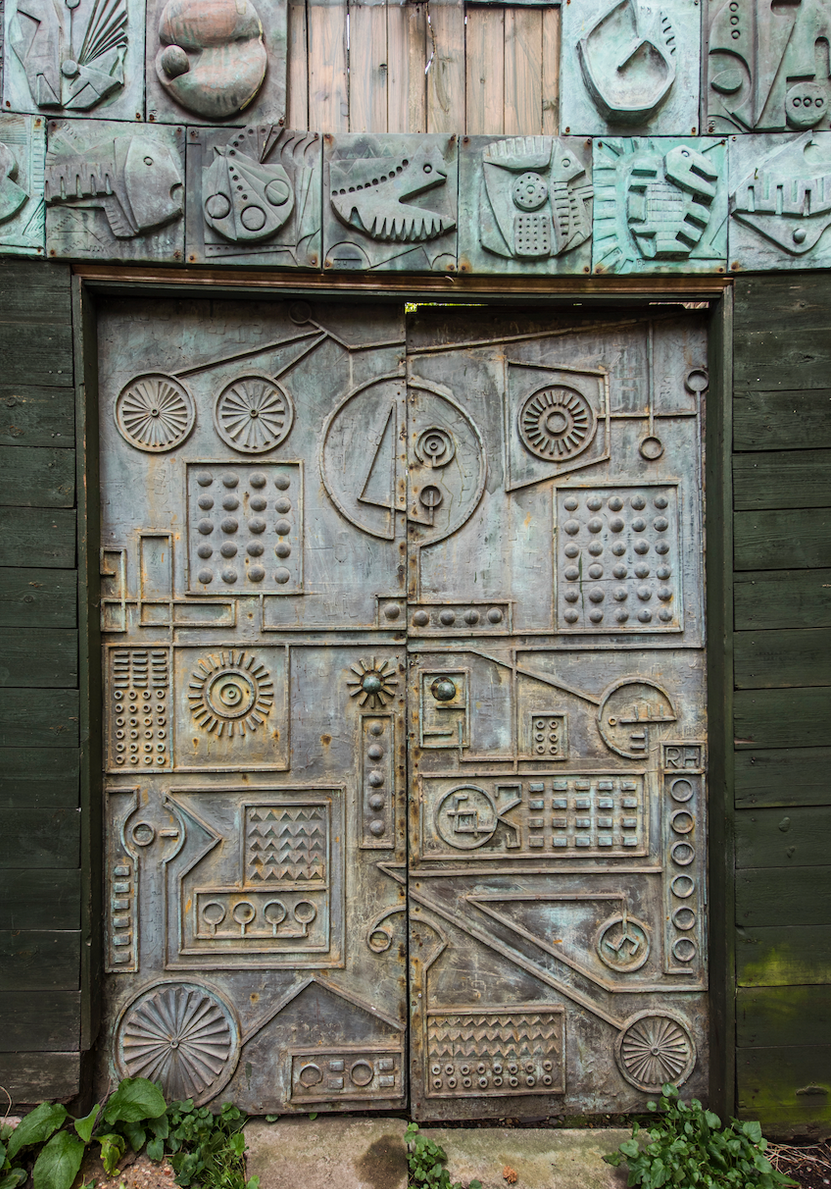
Whilst fibreglass panels include his ‘RH’ initials in the design, or were signed in felt-tip pen or ink by hand with his name on the back, combinations of square terracotta tiles in panels (except those attached directly to the walls of his rooms) most often bear a ‘Ron Hitchins’ signature tile, with his name being impressed into the clay using a custom-made metal stamp. Some are signed with his name in ink on the back of the panel. Each assemblage was intended, rather than random, with each tile and its position and orientation being carefully chosen by Hitchins as he assembled them. Some of his work was unsigned, particularly sculptures.
Spiky Sculpture
Hitchins also produced metal sculptures, often in copper, where metal sheeting was cut, bent and sometimes welded into an angular form, often inspired by birds or flora and fauna, or even the spiky forms of origami. As with his moulded fibreglass works, his prior experience as an engineer and toolmaker was useful here, and these 30 or so metal sculptures were primarily produced during the 1970s.
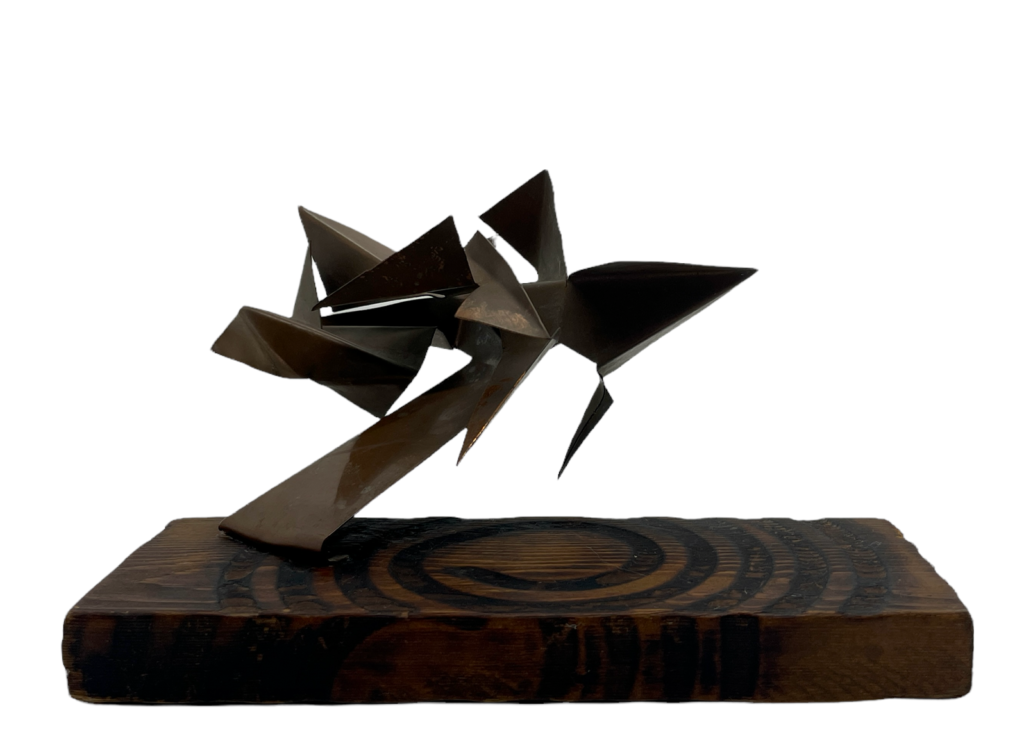
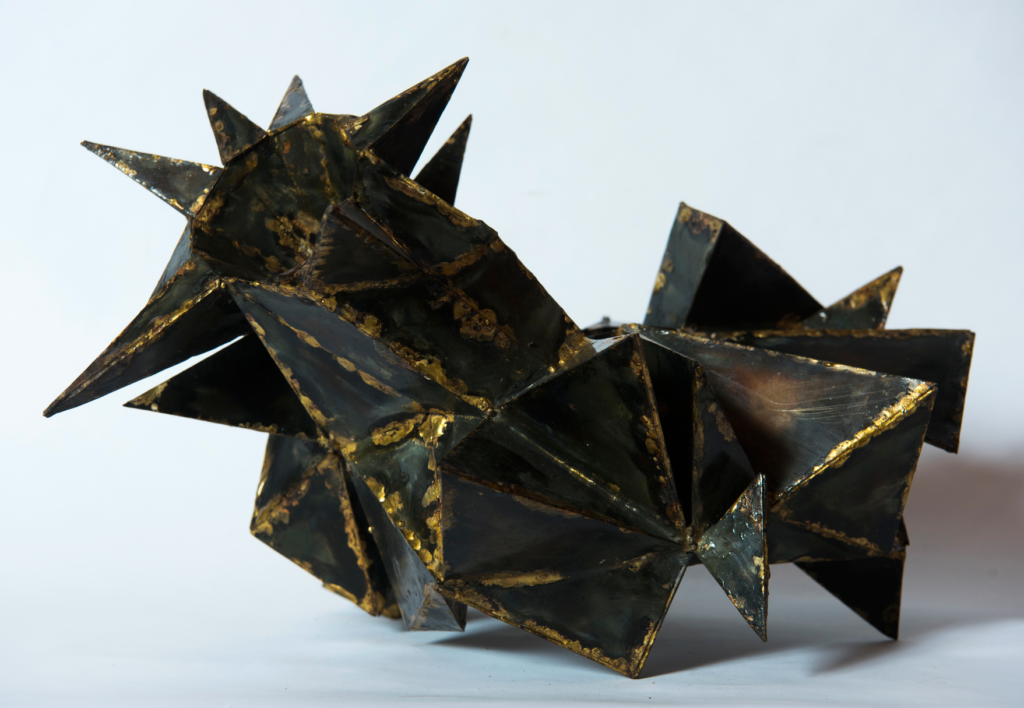
During the 1990s, he fused his interest and experience in flamenco and sculpture to produce assemblages of painted geometric wooden offcuts from furniture lessons contained in glazed deep box frames. One range was titled the ‘Flamenco Series’. Some seem to have been inspired by elements of Postmodern architecture and design in terms of design and colour, with some resembling the work of designers for Studio Alchimia or the Memphis group.
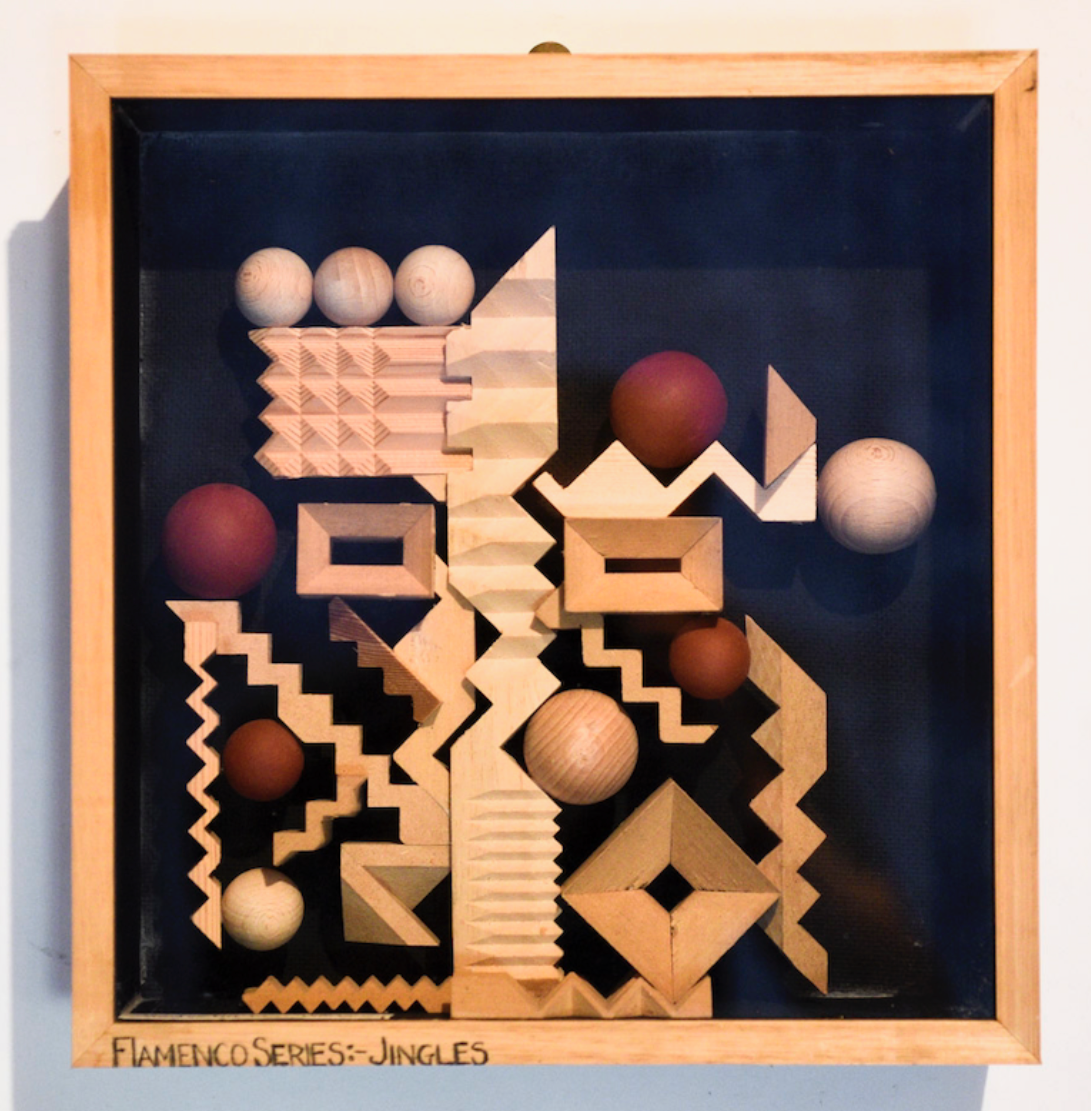
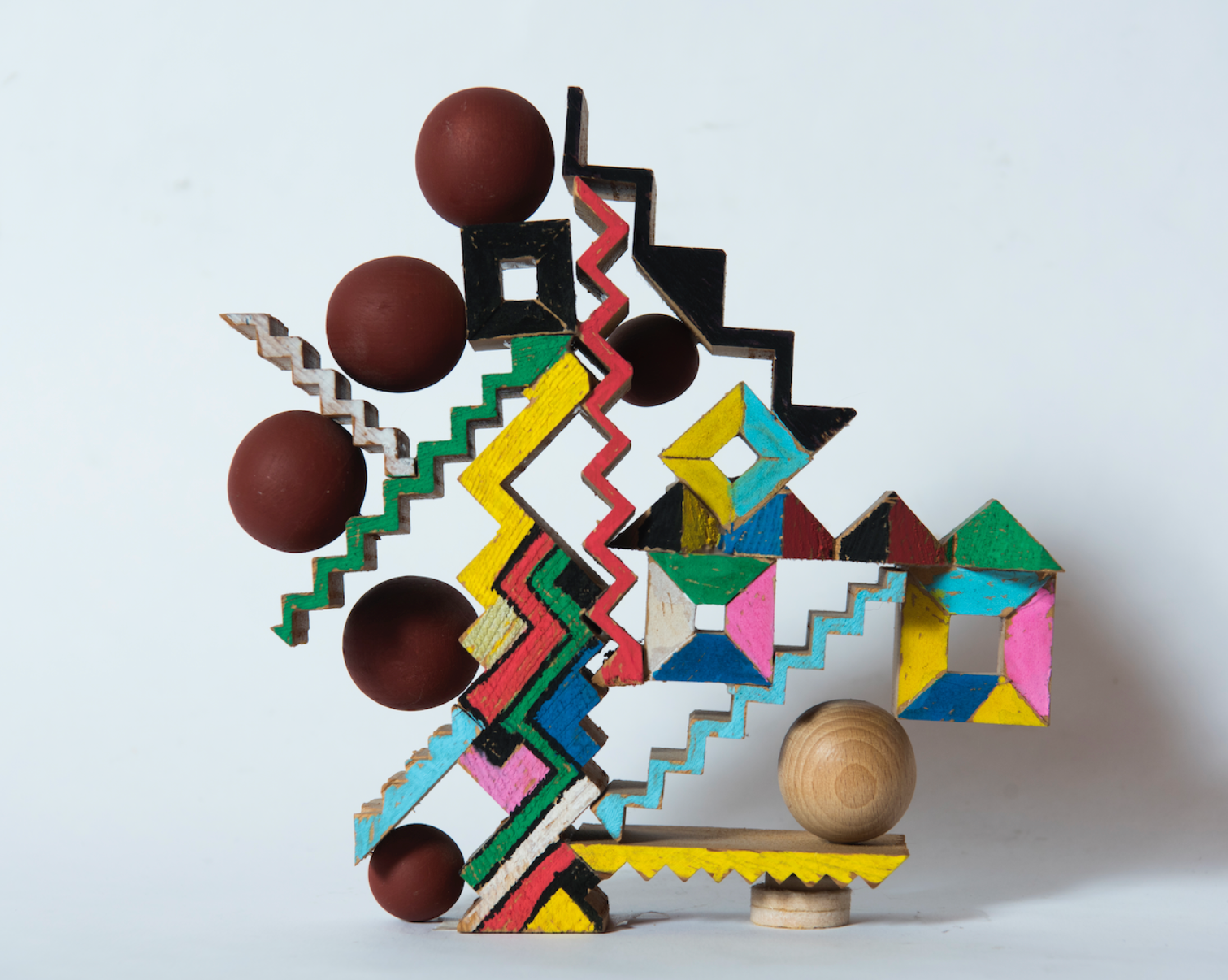
From c.2005 up until a few weeks before his death, he also produced many hundreds of brightly coloured ink and felt-tip pen or acrylic paint artworks on paper that variously echo Aboriginal, African, Native West Coast American and South American art in their abstracted and complex colours and patterns, sometimes incorporating animals, such as snakes, and human forms. Always interested in experimenting with new media and technologies, some of these were digitised, with some being printed onto canvas.

Hitchins’ House
Whatever the medium, Hitchins’ work has a highly-developed and harmonious sense of form, design and colour united by a unique core style. His legendary timing and rhythm in dance translated into balanced movement in his art. He filled his entire house with his art, placing it where it fitted size-wise at random in every room, with even the bathroom walls and kitchen ‘splashback’ covered with panels of thousands of terracotta tiles. His house, although a working art studio and dance venue brought alive by a myriad of late night flamenco parties, was thus arguably a work of art in its own right. Both Hitchins and his art inhabited his house.
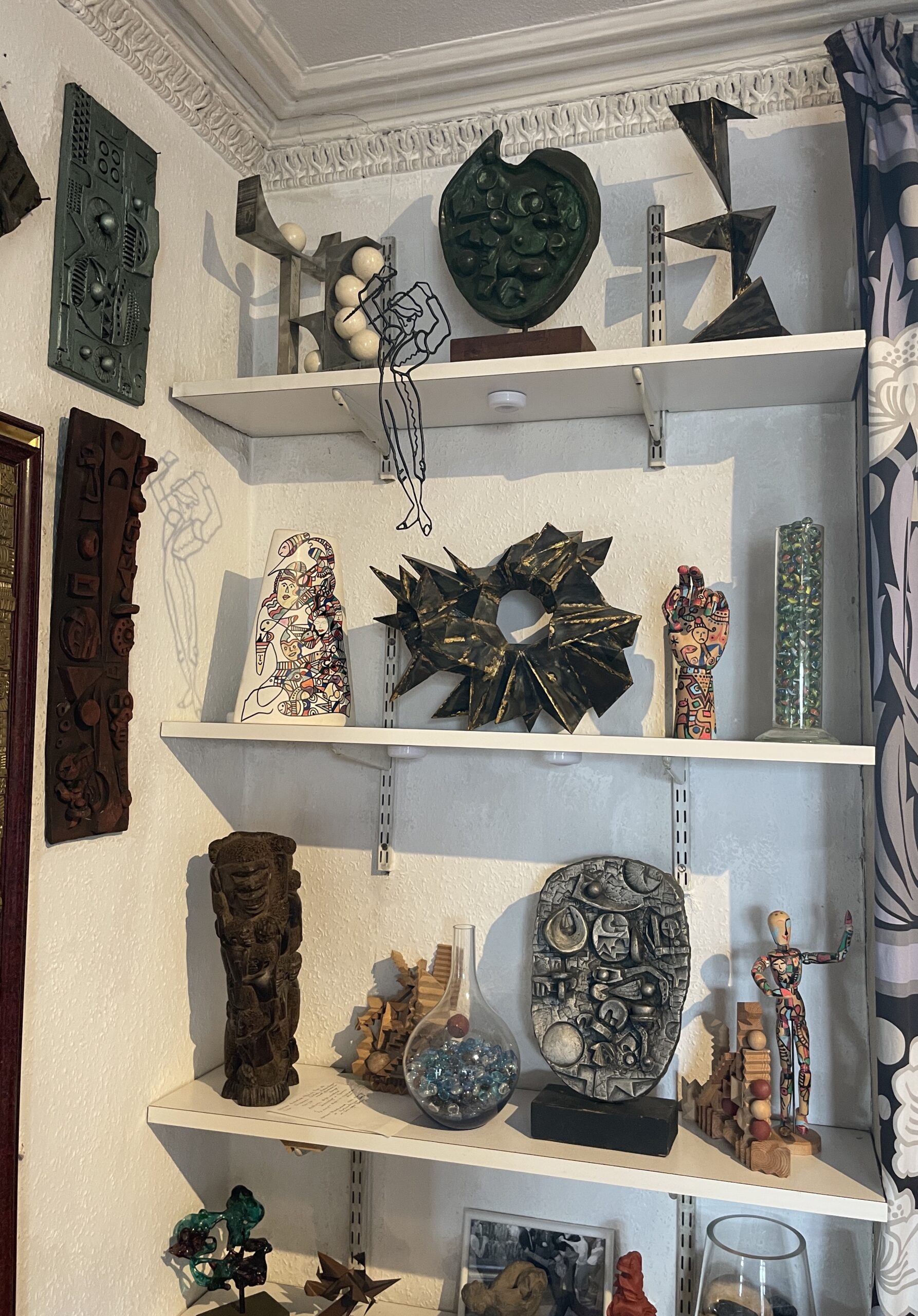
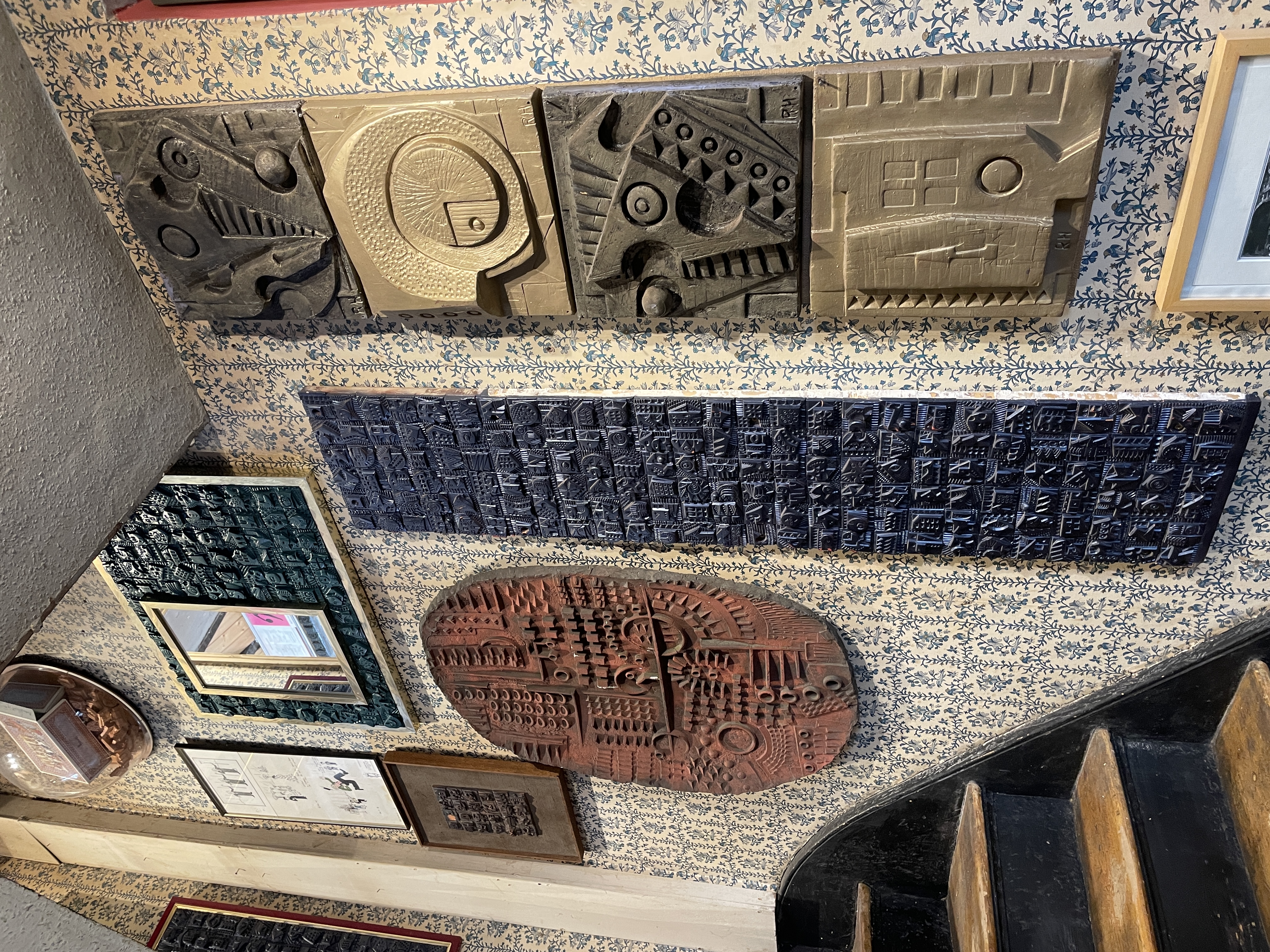
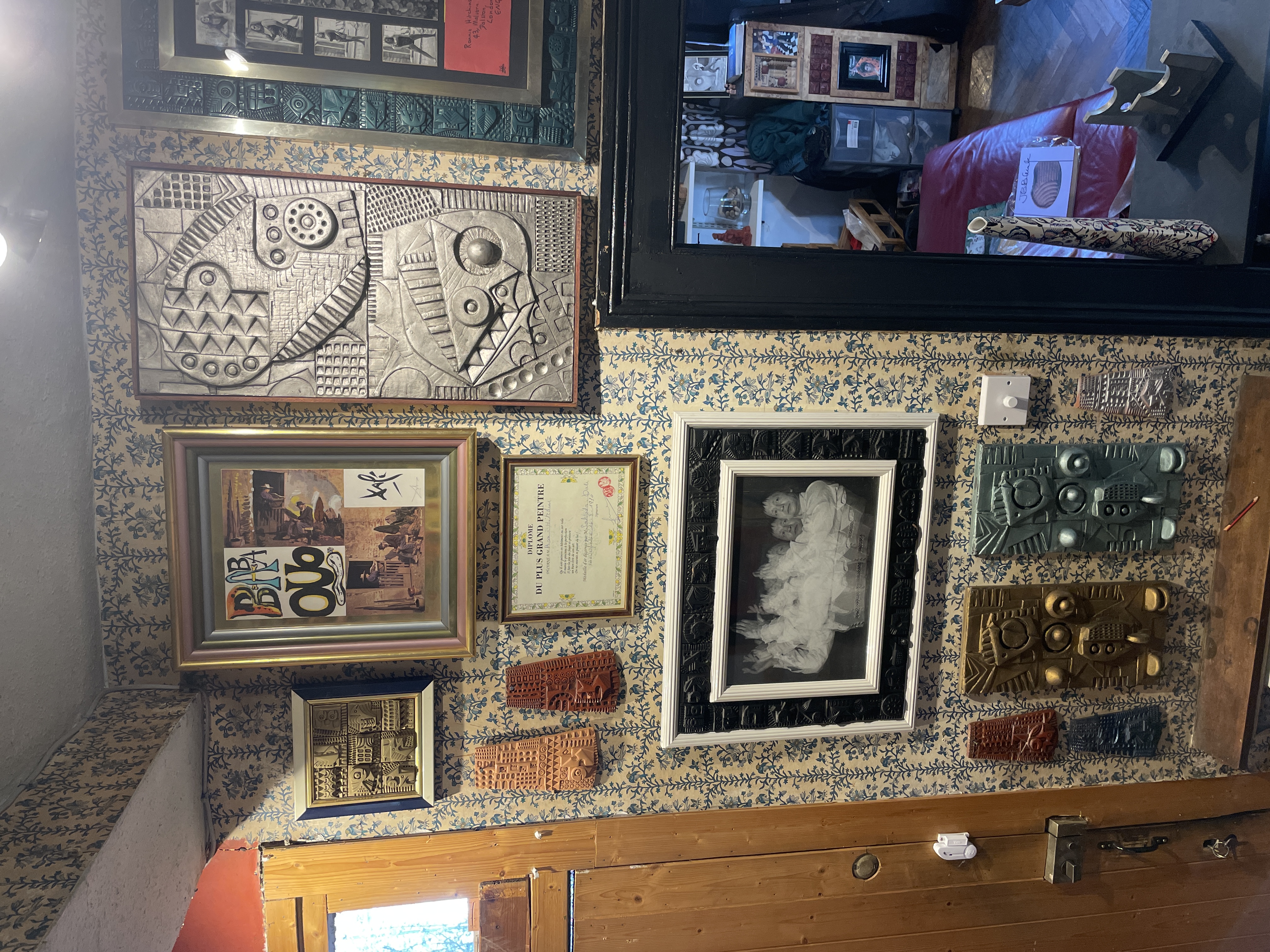
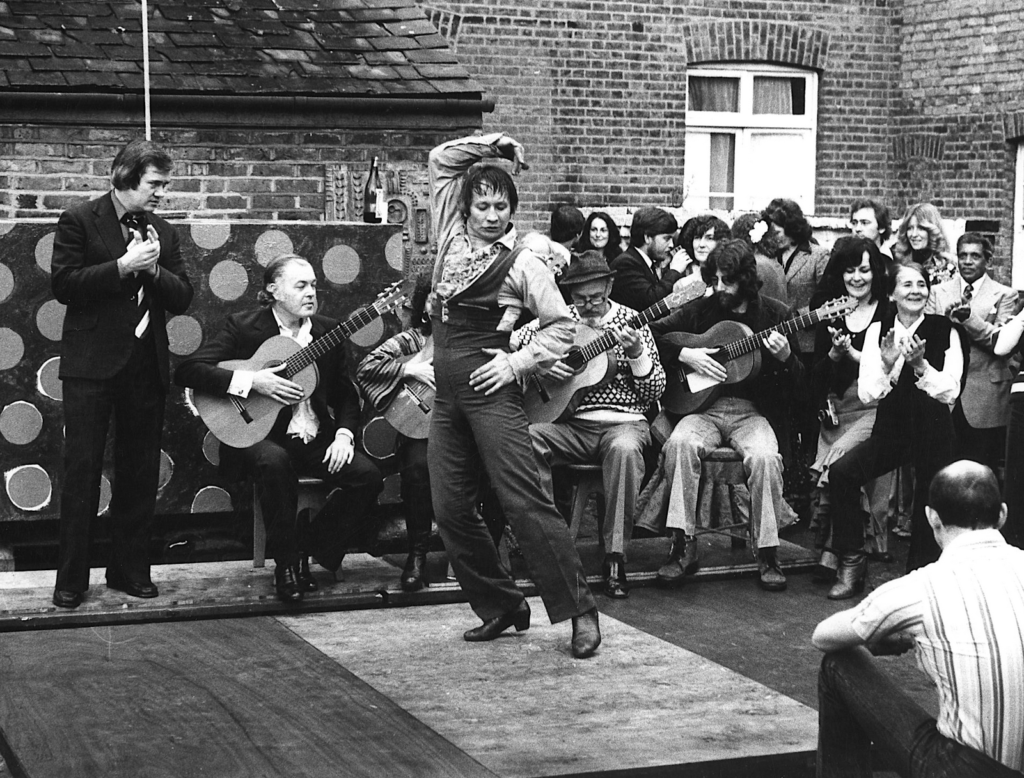
Glassworks
When I viewed the collection in Hitchins’ house some time after his death (all Covid precautions in place at the time were followed) and largely untouched since his death, two works intrigued me the most within the plethora. These were two glass sculptures formed from arching fusions of multi-coloured glass, one of which almost resembles a meteorite. They capture the essence of the fluidity of molten glass, so are true to the material of glass itself. Mounted on pedestals, they were clearly important to Hitchins as they sat on shelves on either side of his sofa. Both were damaged, with a couple of losses indicated by sharp, glossy edges, and one had been broken and re-glued. They were covered with a solid layer of dust implying they had been there for some time. Where were these made, and how were they made? There were only two, implying that he either didn’t like working with glass or that it was (understandably) too troublesome, time-consuming, or expensive to repeat.
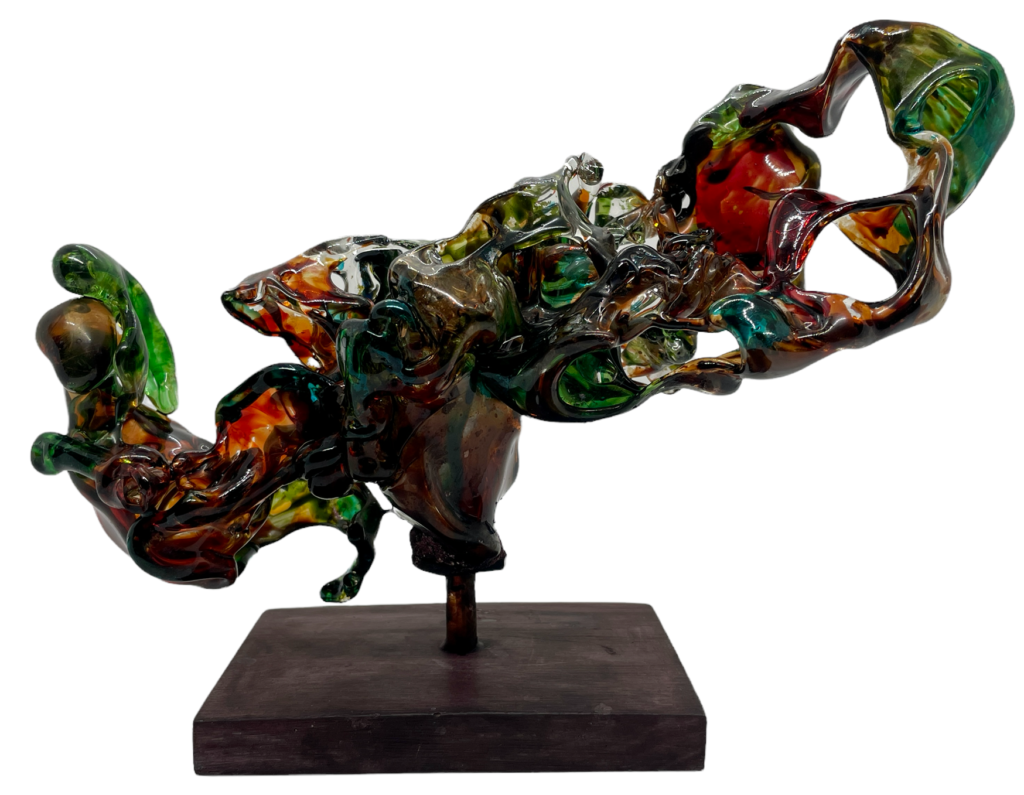
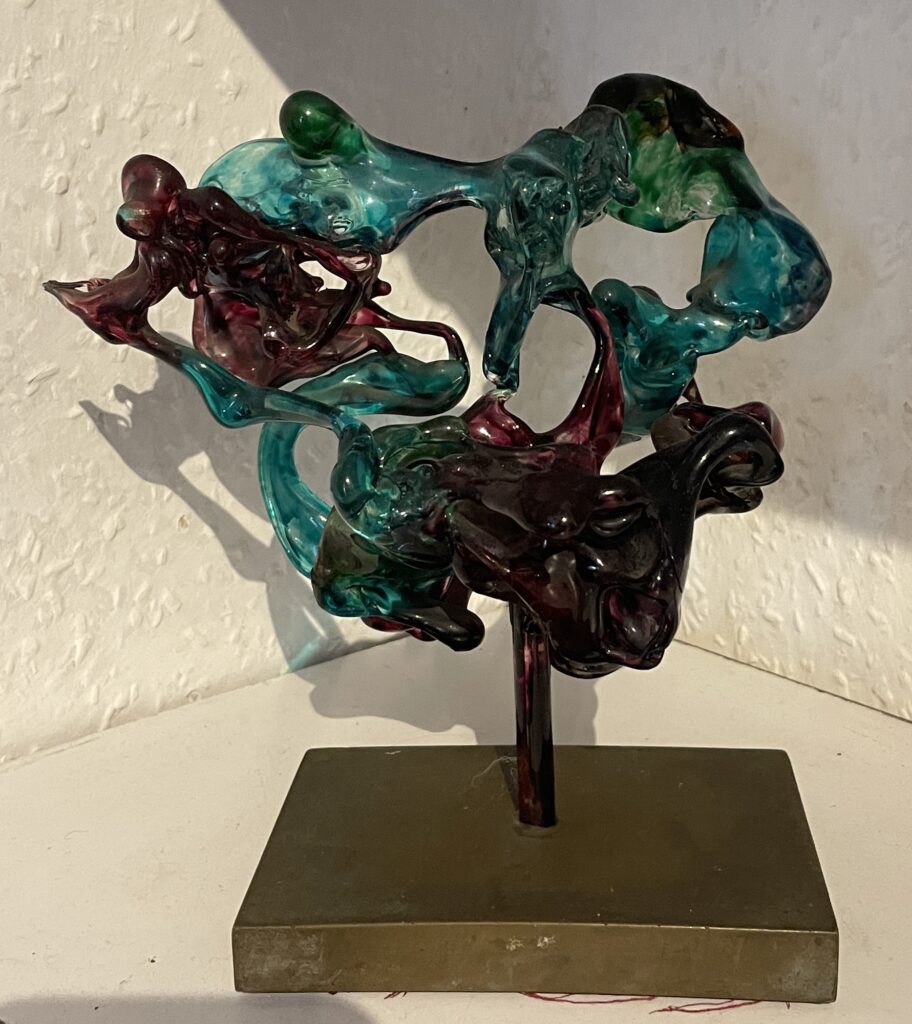
These glass sculptures appear to be lampworked – so, formed by melting and fusing rods of glass using a gas blowtorch. As some of the colour has flaked off, they seem to have been made from colourless glass that was then painted by Hitchins with transparent enamel colours. But the glass is variously thick, massive and hollow (blown?) in places and the works do not resemble traditional lampworked pieces in look or feel. They also cannot have been made by simply blowing or even trailing trailing molten glass. The Studio Glass movement only came to the UK in 1965, and didn’t blossom for a few years after that – even then access to a furnace in London was reserved for students, or (after 1969) graduates using The Glasshouse. I’m also not aware of any easily accessible course anywhere in the UK that taught lampworking, let alone glassmaking, so Hitchins must have learned to melt and manipulate glass ‘on the fly’ from (probably) a lampworker he met somewhere – maybe during the 1970s when studio glass was ‘hot’, new and exciting. He must have gone his own way and combined different techniques, experimenting and learning as he played with this magical and mercurial molten material. We will probably never know the story behind them, but experimenting with – and arguably succeeding in – different media seems to have been the story of Hitchins’ life.
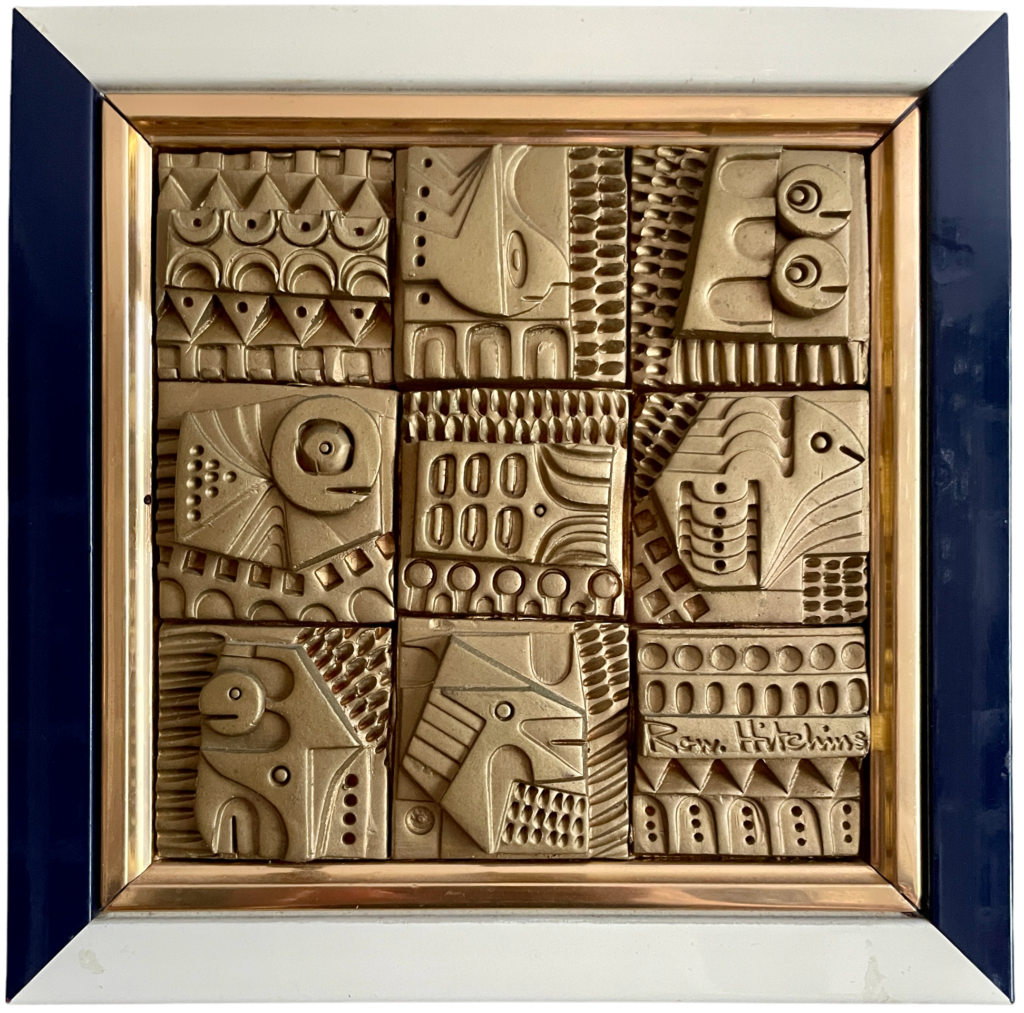
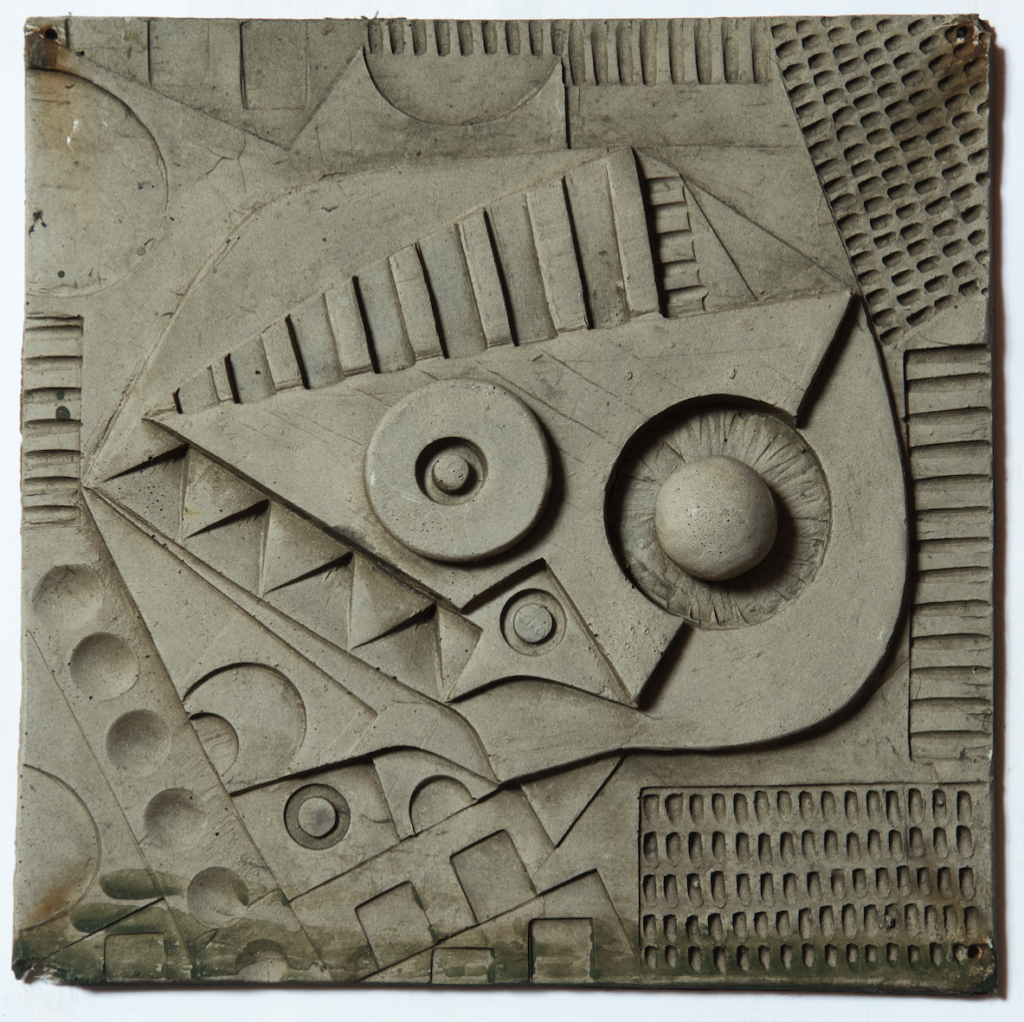
Future Fame
I firmly believe that Hitchins’ work will continue to rise in desirability, and values will remain strong and grow as his posthumous fame grows. The fascinating story and unique, enigmatic and eccentric work of this artisan artist – almost ‘outsider’ artist – working on the margins of the traditional, staid art world will undoubtedly write him into not just the story of the mid-20th century East London art scene, but also the history of British art in the 20th century.
Mark Hill, London, June 2022.
To learn more about Ron Hitchins and his house and art, visit – ronhitchins.com
To see me appraising an example of Hitchins’ work on the BBC Antiques Roadshow – click here
For an interview with Mike Jingle and views of Hitchins’ house displaying his art work – click here
For an interview with Hitchins, directed by Ken Russell, mainly about his life and flamenco – click here
Postcript
The Victoria & Albert Museum has acquired two of the largest framed panels of Hitchins’ tiles, which will be included in the V&A East museum in the Olympic Park, London. The Museum of London have also acquired some of Hitchins’ art and flamenco-related items.
With thanks to Mike Jingle and Russell Whitbread.

